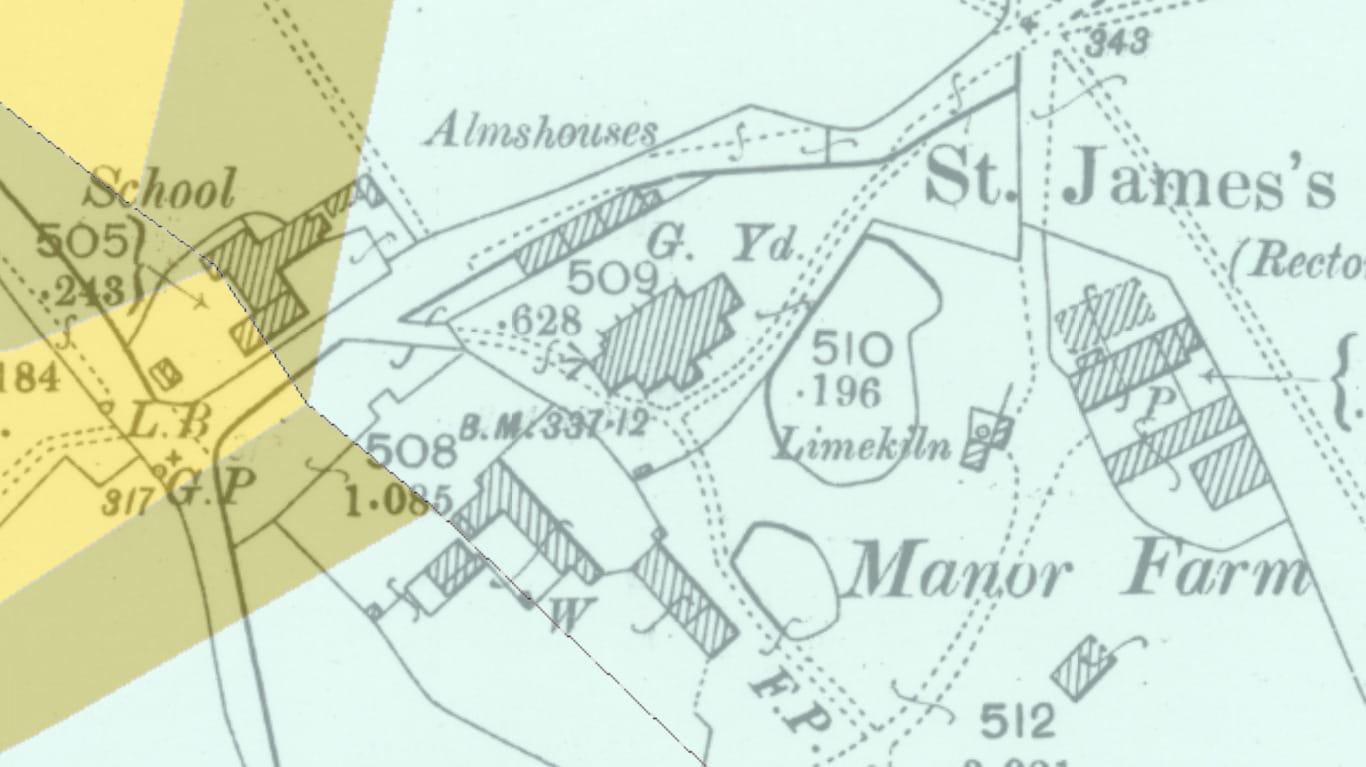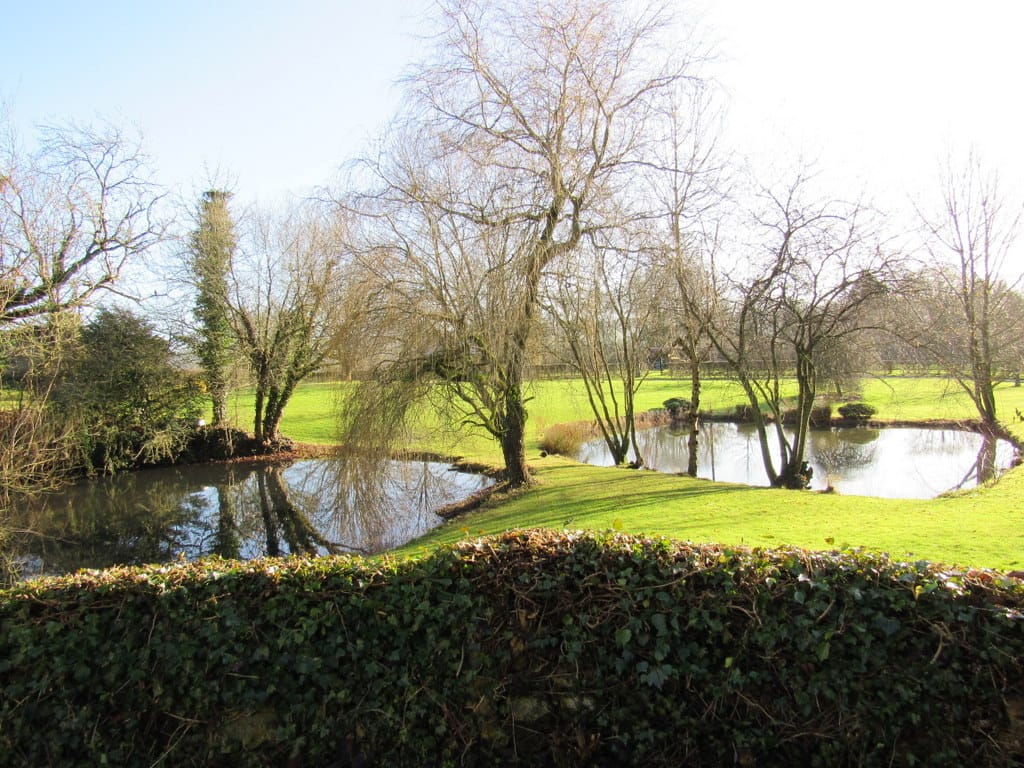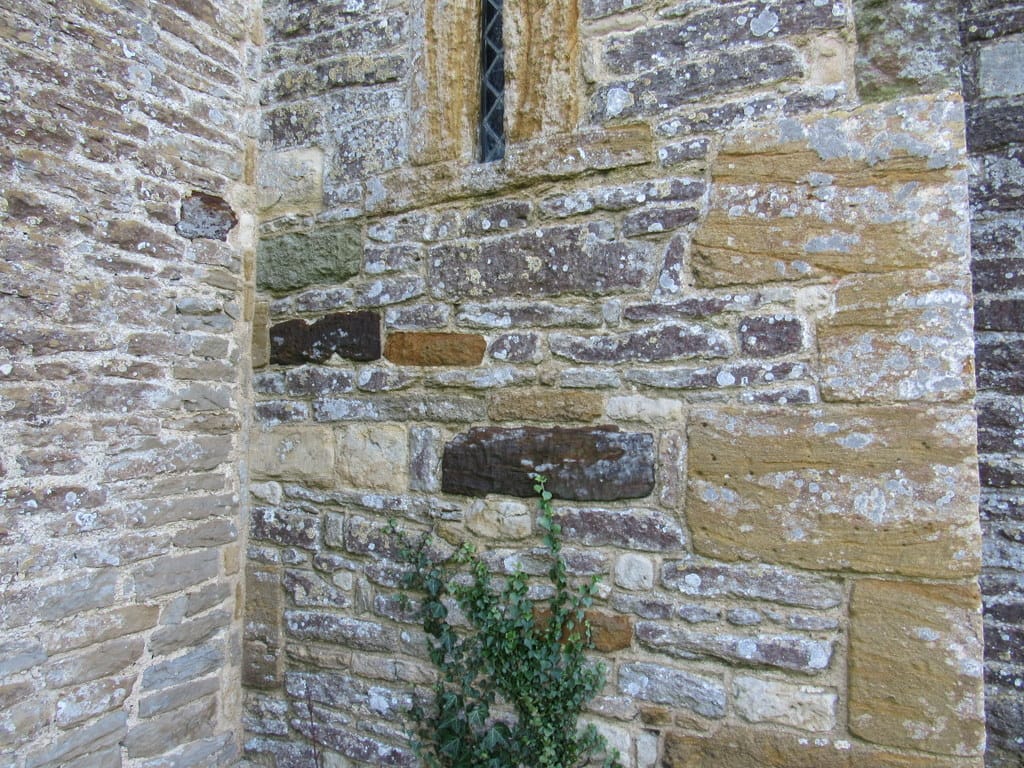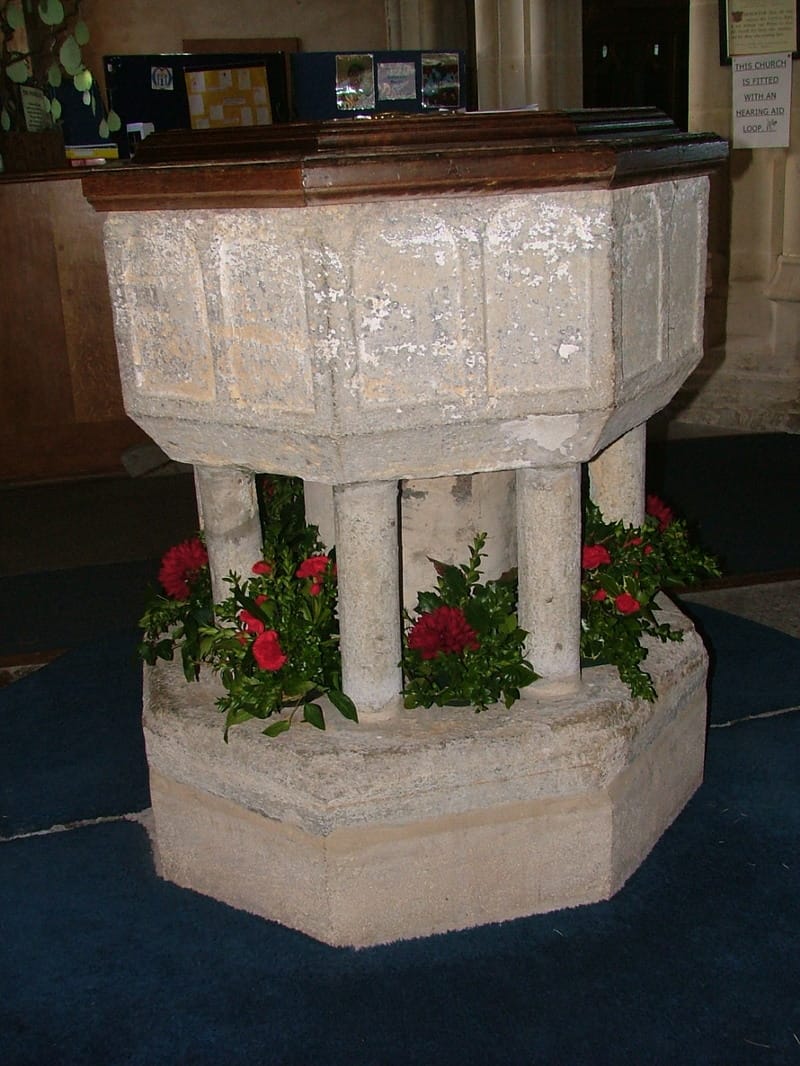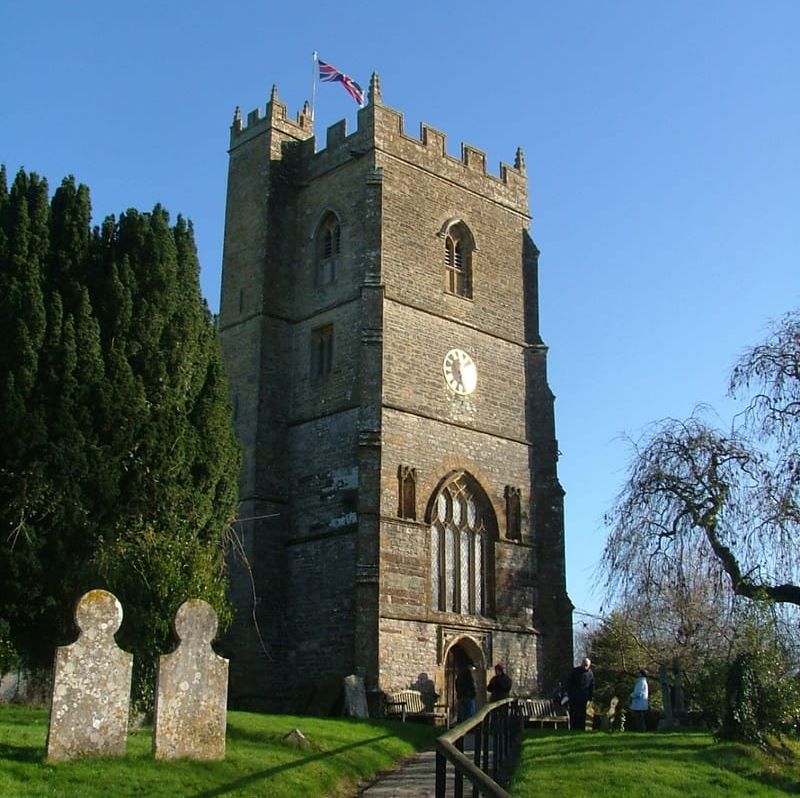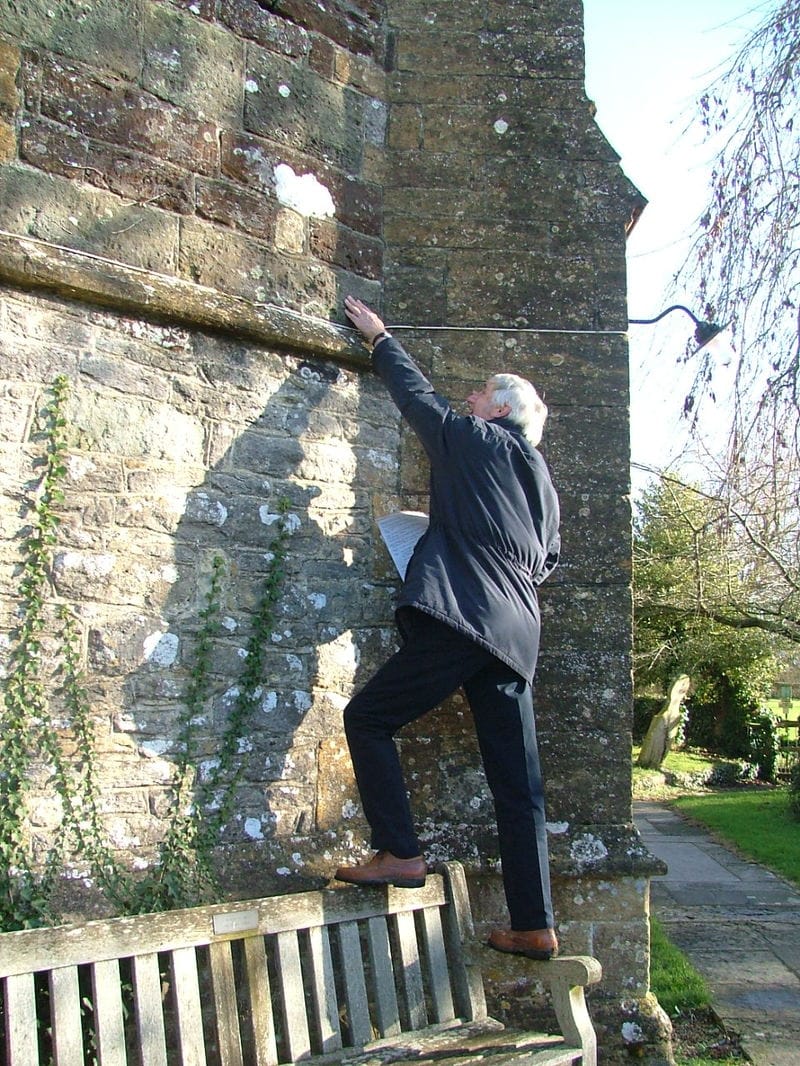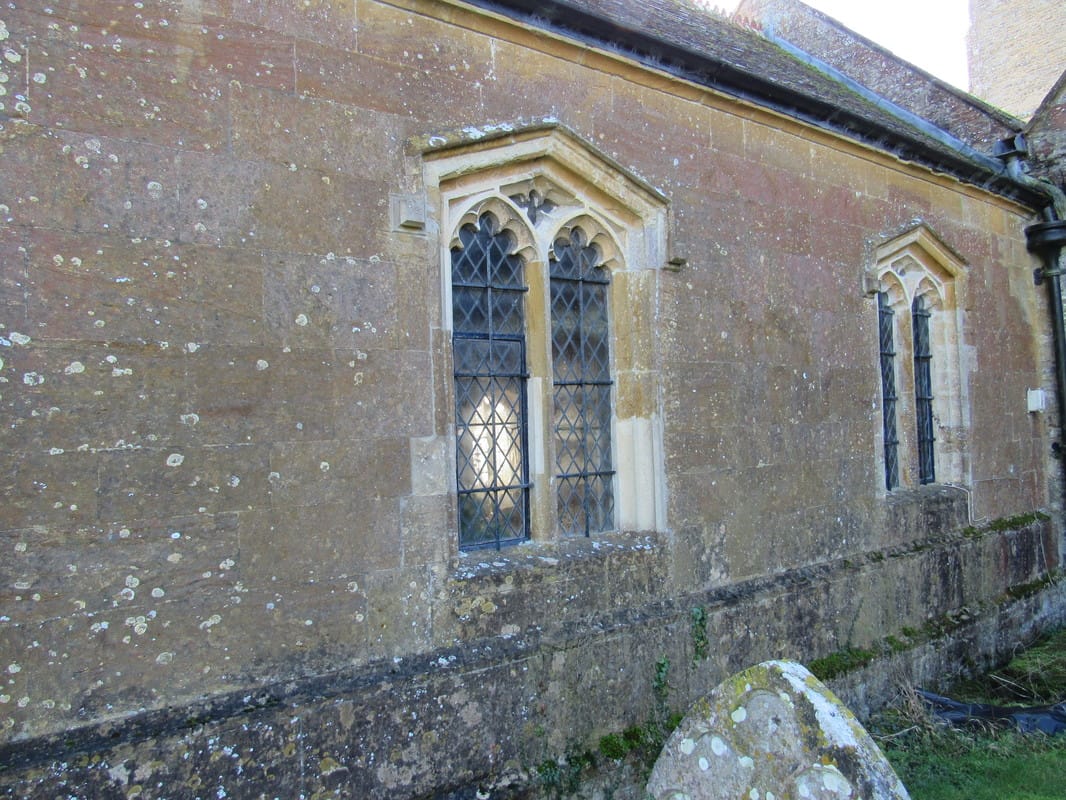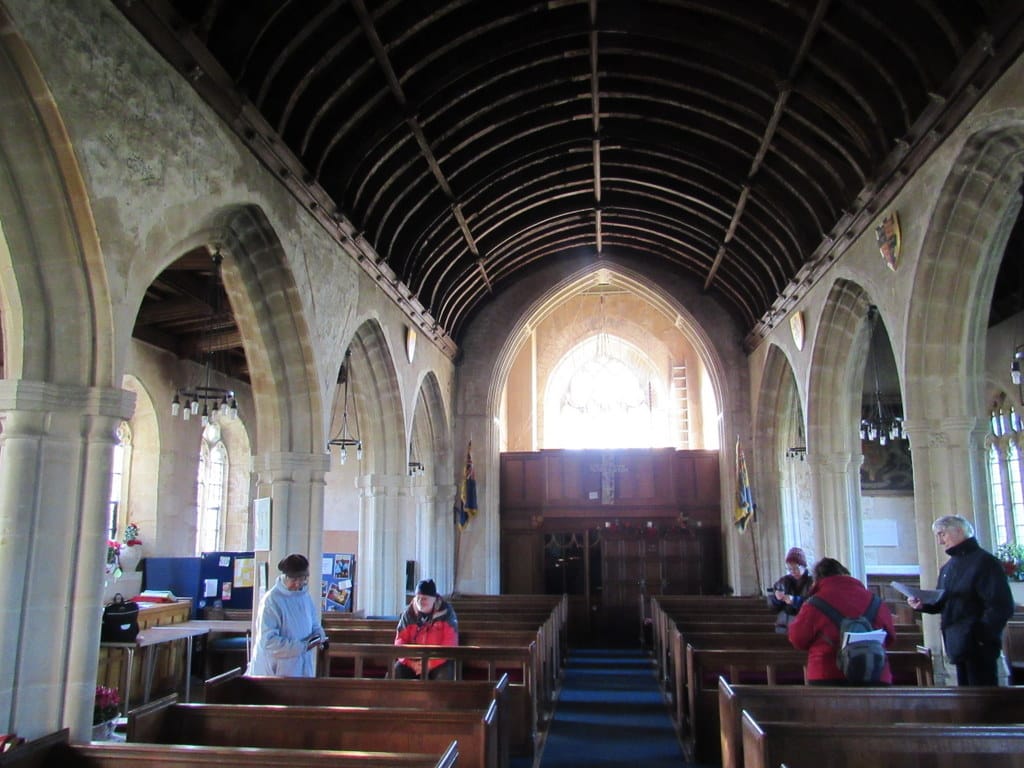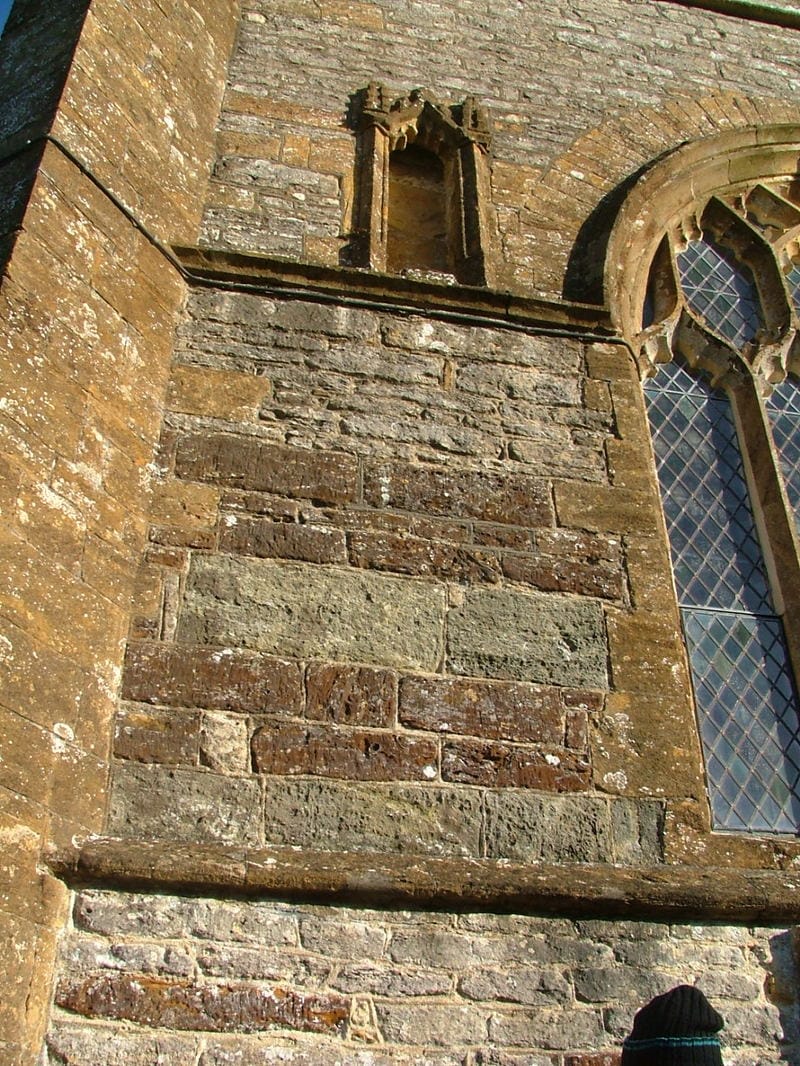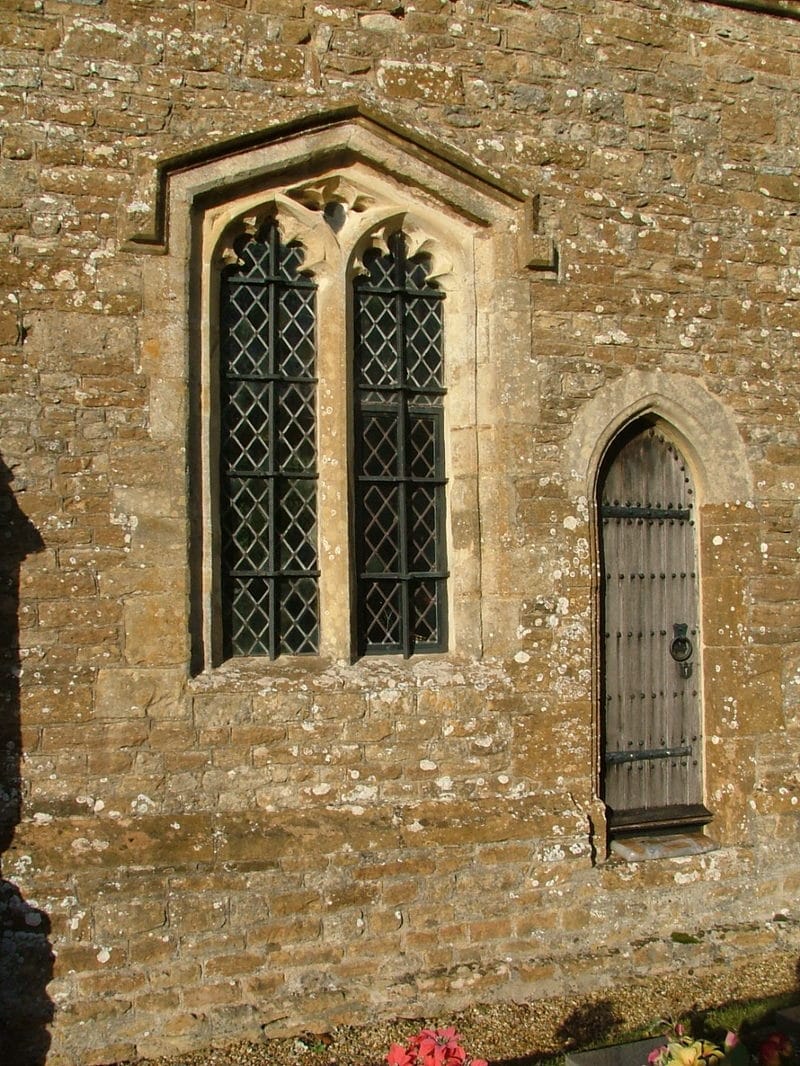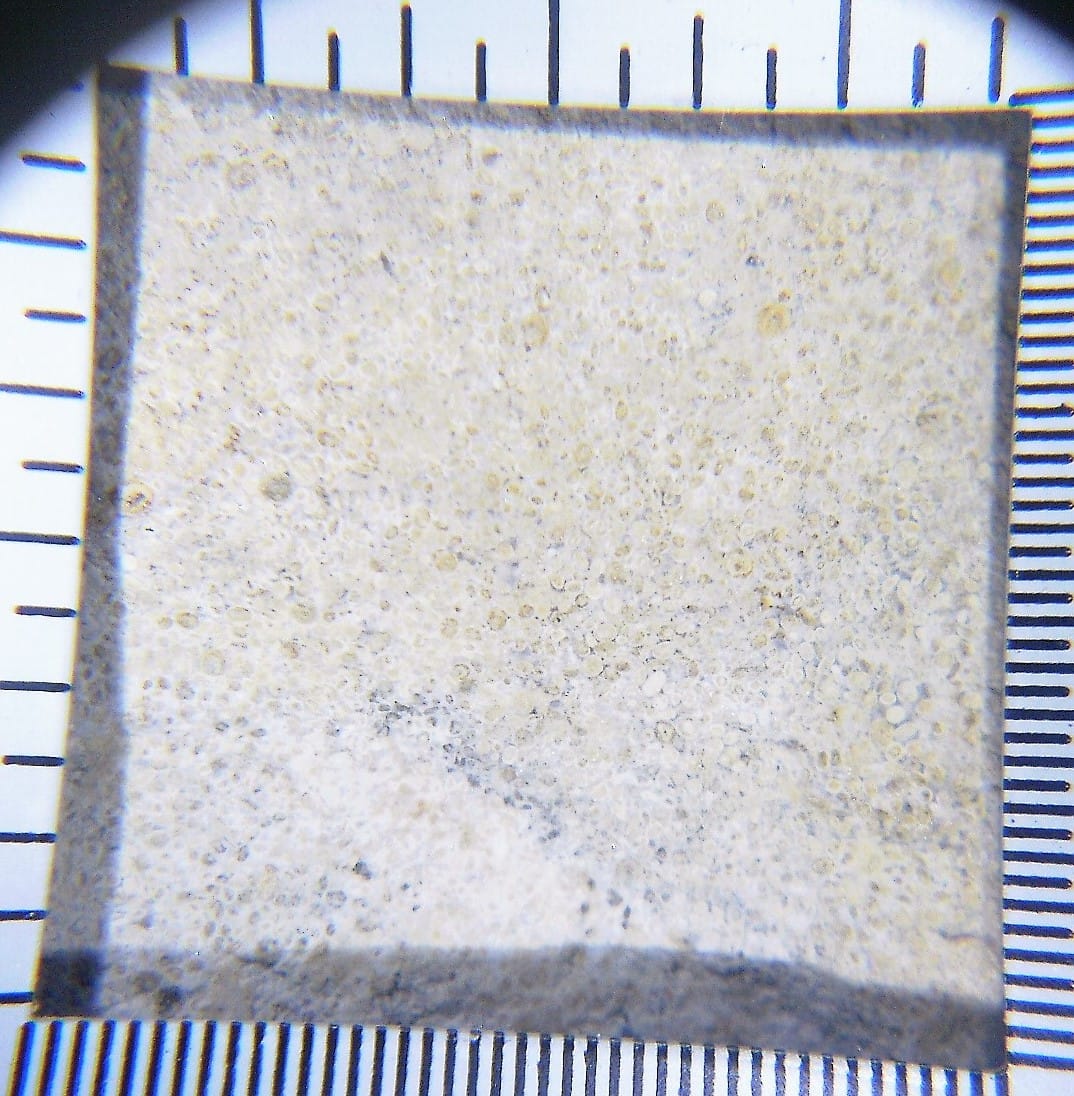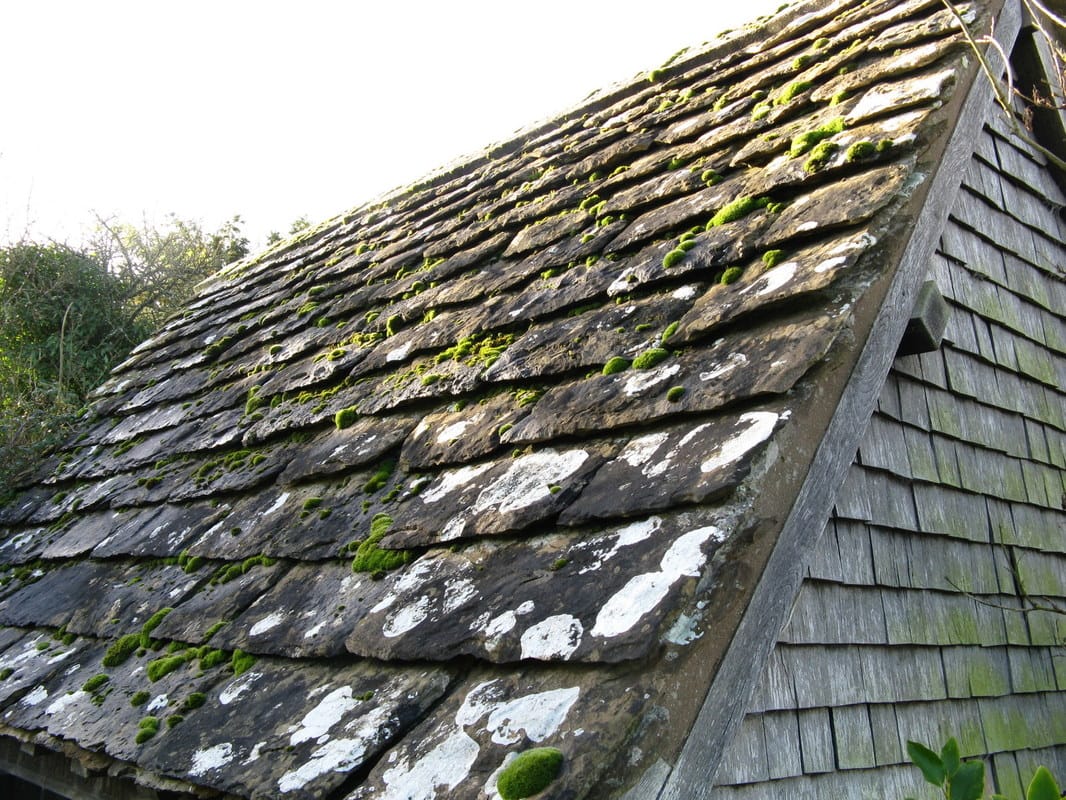Hazelbury Bryan:The church of St.Mary and St.James at Droop
ST75320 08284 (Lead author: JT)
|
Below is the 6 inch c.1900 O.S. map for St. Mary and St James's Church (Droop, Hazelbury Bryan) with an overlay of 1:50 000 BGS geological map. Note the quarry and lime kiln east of the church (where the ponds are now located.
Light Blue: Clavellata Formation Brown: Newton Clay Member Cream: Sturminster Pisolite Member The latter two units are sub-divisions of the Stour Formation. The doorway in the tower is also of Upper Greensand, which probably came from Shaftesbury. The Corallian limestone will have come from the quarry, now ponds, in the farmyard south of the church.
The windows in the south aisle and south chapel are of the same design, but have different repairs which include both Corallian limestone and Bath Stone. The main east window in the chancel is also of Bath Stone. The wall of the south aisle has several different shaped blocks, somewhat thinner than the Trigonia Clavellata blocks, and all of them seem to have developed a calcite crust which obscures the details. This is a result of long-term weathering.
The floor slabs are of Blue Lias, except for one ledger slab of green Purbeck Marble at the entrance to the south chapel. The 12th century font is blue Purbeck Marble.
|
Hazelbury Bryan is in fact a collection of seven dispersed hamlets. At one of these hamlets, Droop, is the interesting church of St Mary and St James, which was rebuilt in about 1400.
The north wall of the chancel is of Ham Hill Stone ashlar, but the remaining walls of the chancel still use the Corallian limestone.
The windows in the south aisle and south chapel are of the same design, but have different repairs which include both Corallian limestone and Bath Stone. The main east window in the chancel is also of Bath Stone. The pillars of the north and south aisles appear startlingly white, but this is due to a concrete wash which has filled the hollows for the ooliths. Close examination shows that a few Ham Hill Stone bases remain, but all the columns are of Bath Stone. These Bath Stone repairs must be dated after the arrival of the railway, in the 1895 restoration.
|
The church of St. Mary and St. James was built in the second half of the 15th century, with restoration of the chancel in 1827 and other restorations in 1895. The walls of the west tower are built mainly of Corallian Trigonia Clavellata beds, with two bands of brown heathstone in the lower storey, and some odd blocks and buttresses of Upper Greensand.
Ham Hill Stone has been used throughout the church for the dressings of windows, doorways, quoins, and parapet and for many scattered blocks.
The lych gate was added in the 19th century and is roofed with Forest Marble tiles. The floor of the lych gate contains a stone rescued from the ruined abbey on Iona. This is set into a circular slab of Blue Lias.
|

